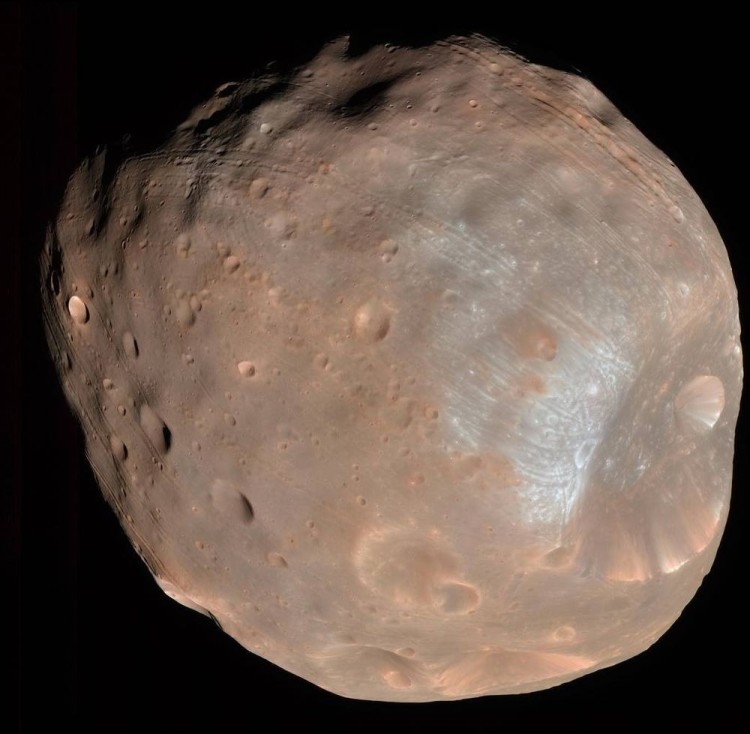Want to Visit Mars? Start With a New Moon Mission: Adam Minter

published Dec 25th 2016, 3:00 pm, by Adam Minter
(Bloomberg View) —
Fifty years ago, the U.S. had the moon to itself. Starting in 1969, when the first of six Apollo missions touched down, it seemed likely that American astronauts would make a long-term home on the lunar surface. Instead, the U.S. sent its last manned mission there in 1972, and won’t be returning any time soon. That’s a shame: The moon is now a more compelling destination than ever.
Other countries, seeing new scientific and commercial potential there, have started to fill the exploration gap, including China, Russia and Japan. Perhaps the most ambitious effort is the European Space Agency’s “moon village,” which is intended to be a permanent international outpost on the lunar surface. In recent weeks, the concept has gained considerable momentum as Europe’s science ministers and private space companies have embraced it.
If the U.S. wants to join them, and resume its historic role as the leader in lunar exploration, it’ll need a major shift in priorities.
America’s space program is currently focused on the “Journey to Mars,” a hugely expensive undertaking approved by President Barack Obama in 2010. The (still hazy) plan is to fly astronauts around the red planet — and possibly land there — in the 2030s, bypassing the moon entirely. As a growing number of experts have cautioned, though, that could be a costly mistake. Getting back to the moon first makes more sense, both as a destination in its own right and as a way station en route to Mars.
For starters, such a mission could be a scientific bonanza. A few years ago, NASA published a list of dozens of research objectives that could be accomplished on the moon, including the long-held dream of a lunar radio telescope, capable of exploring the earliest history of the universe. Another possibility would be experimenting with mining and manufacturing projects in the moon’s weak gravity.Getting those efforts right could have major benefits. Researchers now know that the moon has a trove of raw material, including gold, cobalt, palladium, platinum, iron and — perhaps most important — water. A number of private companies are devising ways to mine the metals for profit. But the water could prove far more valuable: In addition to supporting the residents of a moon village, it could be used as cheap fuel for journeys to other destinations in the solar system.
That includes Mars. In 2014, a National Research Council report found that returning to the lunar surface “would make substantial contributions” to a Mars journey. In theory, the moon would offer an off-planet outpost to run experiments, test new systems, cultivate food, monitor astronauts’ health and conduct other research that could make the dangerous, months-long trip to Mars much safer and easier. Stopping at the moon would also be cheaper than a direct flight: One study found that a lunar refueling station could save $10 billion a year by allowing NASA to use fewer and lighter rockets.
Europe’s moon village offers a pretty good starting point. As the European Space Agency describes it, the village would provide an open platform that could be used for a variety of missions, public or private, starting by the 2030s. In a sense, it would resemble the U.S.’s 60-year old McMurdo Research Station in Antarctica. Over the decades, different interests and agencies have added on to what started as a small scientific outpost, and transformed it into a thriving research base that supports world-class laboratories.
The moon village would surely be more complicated. But NASA has plenty of experience in complex space collaborations: It heads up the International Space Station, which has been in flight since 1998 and involves agencies from five countries. Although the ISS is slated to wind down in 2024, the system of governance and spirit of cooperation that made it a success could be transplanted to a moon village, with other countries, and companies, shouldering more of the financial burden.
It won’t be easy, and it won’t be cheap, but it’s the natural next step for a country — and a species — determined to explore.
This column does not necessarily reflect the opinion of the editorial board or Bloomberg LP and its owners.
Adam Minter is a Bloomberg View columnist. He is the author of “Junkyard Planet: Travels in the Billion-Dollar Trash Trade.”
To contact the author of this story: Adam Minter at aminter@bloomberg.net To contact the editor responsible for this story: Timothy Lavin at tlavin1@bloomberg.net
For more columns from Bloomberg View, visit Bloomberg view
copyright
© 2016 Bloomberg L.P







No Comment